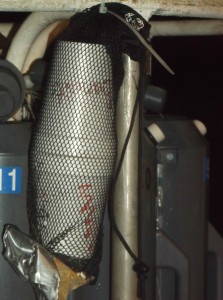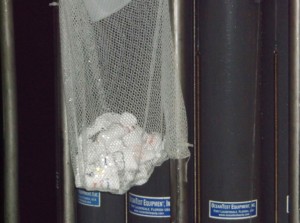Deep Sea Fish and Sediment Surveys in the Gulf
Thursday’s adventures
Posted by K. Bylsma, Teacher at Sea, C-IMAGE , August 8, 2013.
 The original styrofoam cups came back up from 2300 meters at DSH09. Then, we sent styrofoam cups to 1450 meters at DWH.
The original styrofoam cups came back up from 2300 meters at DSH09. Then, we sent styrofoam cups to 1450 meters at DWH.
How does the depth affect the styrofoam? Maybe it’s the water chemistry that is different and causing this effect.
Maybe we sabotaged the cups, ourselves ???
What do you know about water pressure? If you scuba dive, then you know a great deal. What do we truly understand about barometric pressure ? I located a couple of exercises for students to explore these concepts at the NOAA and USGS sites.
While we surface dwellers live at the bottom of an “ocean” of air, a vertical column of air is thinner than water and weighs less than a vertical column water. The weight of several hundred or several thousand feet of water pressing down is much greater than the weight of miles of air. Calculating the underwater pressure that results from those differences can mean the difference between life and death for divers, researchers and others whose work takes them beneath the greater weight of the “water column.”
1.Define the depth for which you wish to calculate the pressure. Determine whether the water is salt water or is it fresh water.
2. Multiply the depth in feet by 0.432 to calculate the underwater pressure in fresh water, in pounds per square inch (psi). If the depth of fresh water is 100 feet, then: 0.432 x 100 = 43.2 pounds per square inch.
3. Multiply the depth in feet by 0.445 to calculate the underwater pressure in salt water, in pounds per square inch. If the depth of fresh water is 100 feet, then: 0.445 x 100 = 44.5 pounds per square inch.
| Print article | This entry was posted by greely on August 15, 2013 at 10:42 pm, and is filed under Oceanic Updates. Follow any responses to this post through RSS 2.0. You can leave a response or trackback from your own site. |


